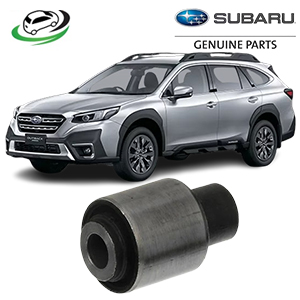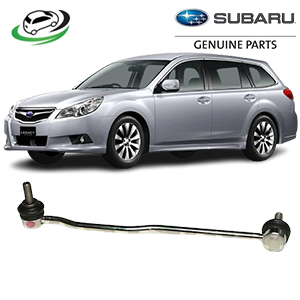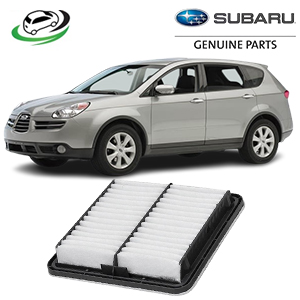-17%
Get Subaru Tribeca 2007 Air Filter Element Sub-Assy 16546AA120
The air filter element sub-assembly is a crucial component of an engine’s air intake system. It plays a vital role in ensuring that clean air enters the engine for combustion, contributing to optimal performance and longevity. Understanding the functions, benefits, maintenance practices, and signs of wear or failure associated with the air filter element sub-assembly is essential for vehicle owners and automotive enthusiasts alike.
1. What is an Air Filter Element Sub-Assembly?
The air filter element sub-assembly is comprised of several components designed to filter out contaminants from the air before it enters the engine. Typically constructed from materials such as paper, foam, or cotton, the air filter element is housed within a durable casing that protects it and facilitates its installation within the engine compartment.
The primary function of the air filter is to trap dirt, dust, pollen, and other particles from the air, preventing them from entering the engine. This filtration process is critical for maintaining engine performance and efficiency.
2. Functions of the Air Filter Element Sub-Assembly
The air filter element sub-assembly serves several key functions:
a. Filtration of Contaminants
The primary role of the air filter is to remove harmful contaminants from the incoming air. This is essential for ensuring that only clean air reaches the engine, where it is mixed with fuel for combustion.
b. Maintaining Airflow
While filtering out debris, the air filter also ensures that an adequate amount of air flows into the engine. Proper airflow is necessary for efficient combustion, which impacts overall engine performance and fuel economy.
c. Preventing Engine Damage
By blocking dirt and debris from entering the engine, the air filter helps protect sensitive engine components, such as the cylinders and pistons, from wear and damage. Contaminants can cause increased friction, leading to engine wear and potentially costly repairs.
d. Supporting Engine Efficiency
A clean air filter contributes to optimal air-fuel mixture ratios, which are crucial for efficient combustion. This can enhance fuel efficiency and reduce emissions, benefiting both the environment and the owner’s wallet.
3. Benefits of a Properly Functioning Air Filter Element
Maintaining a properly functioning air filter element sub-assembly provides numerous benefits:
a. Improved Engine Performance
A clean air filter allows for optimal airflow, which can lead to better throttle response and overall engine performance. A clogged or dirty filter can restrict airflow, causing the engine to run less efficiently.
b. Enhanced Fuel Efficiency
With a properly functioning air filter, the engine can achieve the correct air-fuel mixture, leading to improved fuel efficiency. This can result in fewer trips to the gas station and lower overall fuel costs.
c. Reduced Emissions
An efficient air filter contributes to cleaner combustion, which helps reduce harmful emissions. This is particularly important in regions with strict emissions regulations, where vehicles must meet specific standards.
d. Prolonged Engine Life
By preventing contaminants from entering the engine, the air filter protects sensitive components from wear and damage. This can extend the lifespan of the engine and reduce the likelihood of costly repairs.
e. Cost-Effective Maintenance
Replacing the air filter is a relatively low-cost maintenance task that can yield significant benefits. Regularly changing the air filter can prevent more expensive repairs down the line, making it a cost-effective investment in vehicle maintenance.
4. Signs of a Failing Air Filter Element
Identifying signs of a failing air filter element early can prevent engine issues and maintain optimal performance. Here are some common indicators of a dirty or damaged air filter:
a. Reduced Engine Power
If you notice a decrease in engine power or throttle response, it could be due to a clogged air filter restricting airflow to the engine. This can affect acceleration and overall performance.
b. Decreased Fuel Efficiency
A drop in fuel efficiency can indicate that the air filter is not functioning properly. If the engine is not receiving enough air for optimal combustion, it may consume more fuel to compensate.
c. Unusual Engine Noises
A failing air filter can lead to changes in engine sounds. If you hear odd noises, such as a hissing or wheezing sound, it may indicate that air is struggling to enter the engine due to a clogged filter.
d. Check Engine Light
In modern vehicles equipped with onboard diagnostics, a dirty air filter may trigger the check engine light. If the vehicle’s computer detects issues related to airflow or combustion, it may alert the driver through this warning.
e. Visible Dirt and Debris
A visual inspection of the air filter can reveal dirt, dust, or other debris buildup. If the filter appears dirty or clogged, it is time for a replacement.
5. Maintenance of Air Filter Element Sub-Assembly
Regular maintenance of the air filter element sub-assembly is essential for optimal vehicle performance. Here are some key maintenance practices to follow:
a. Regular Inspections
Check the air filter during routine vehicle inspections or maintenance intervals. A visual inspection can help identify any signs of dirt or damage. Consult your vehicle’s owner manual for recommended inspection intervals.
b. Replacement Guidelines
Most manufacturers recommend replacing the air filter every 12,000 to 15,000 miles, or according to specific conditions (e.g., driving in dusty environments). Always refer to the owner’s manual for guidelines tailored to your vehicle.
c. Clean or Replace
Some air filters, particularly foam or reusable models, can be cleaned and reused. Follow the manufacturer’s instructions for cleaning and reinstallation. Paper filters typically need to be replaced when dirty.
d. Consider Driving Conditions
If you frequently drive in dusty or off-road conditions, you may need to check and replace the air filter more often. Monitoring your driving environment can help maintain optimal air filter performance.
e. Professional Assistance
If you are unsure about inspecting or replacing the air filter, consider seeking professional assistance. A qualified mechanic can perform this maintenance task and ensure the air filter is properly installed.
6. Steps to Replace an Air Filter Element
Replacing an air filter element is a straightforward process that most vehicle owners can perform with basic tools. Here’s a general outline of the steps involved:
- Gather Necessary Tools
You will need a screwdriver or socket set, depending on the vehicle design. Some air filter housings may require specific tools for removal. - Locate the Air Filter Housing
Open the vehicle’s hood and locate the air filter housing, typically situated near the engine. Refer to the owner’s manual if you are unsure about its location. - Remove the Housing Cover
Use the appropriate tool to remove any screws, clips, or latches securing the air filter housing cover. Carefully lift the cover off to access the air filter. - Inspect the Old Filter
Take a moment to inspect the old air filter for dirt, damage, or other signs of wear. This can provide insights into the engine’s health and air intake conditions. - Remove the Old Filter
Carefully lift the old air filter out of the housing. Be cautious not to let any debris fall into the housing during this process. - Install the New Filter
Place the new air filter into the housing, ensuring it fits securely and seals properly. Follow any orientation markings if present. - Reattach the Housing Cover
Carefully replace the air filter housing cover and secure it with the screws or clips removed earlier. - Test Drive the Vehicle
After replacing the air filter, take the vehicle for a test drive to ensure everything is functioning correctly. Monitor for any unusual sounds or performance issues.
Conclusion
The air filter element sub-assembly is a critical component of a vehicle’s engine system, responsible for ensuring that clean air enters the combustion chamber. By understanding its functions, benefits, maintenance practices, and signs of wear, vehicle owners can take proactive steps to maintain their vehicles effectively. Regular inspections and timely replacements of the air filter contribute to improved engine performance, fuel efficiency, and overall vehicle longevity. Making air filter maintenance a part of your routine can lead to a more reliable and enjoyable driving experience.
Follow us on Facebook for more parts.




Reviews
Clear filtersThere are no reviews yet.